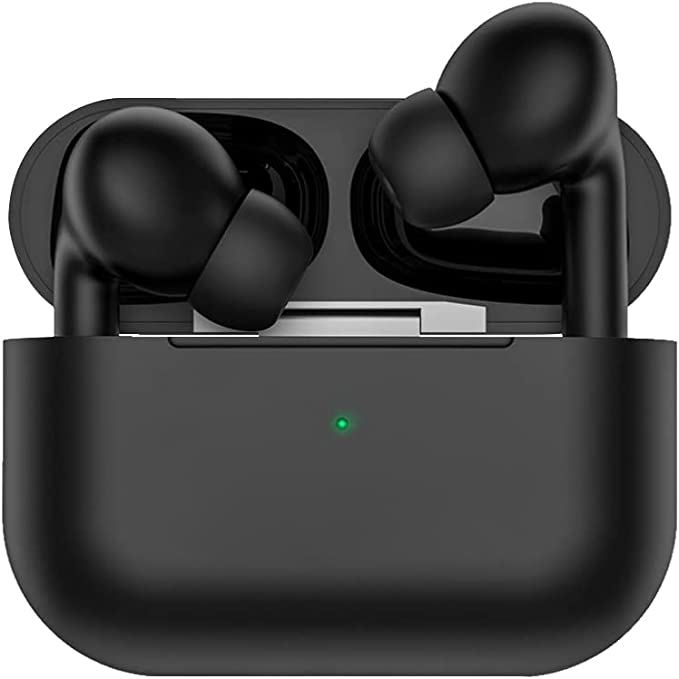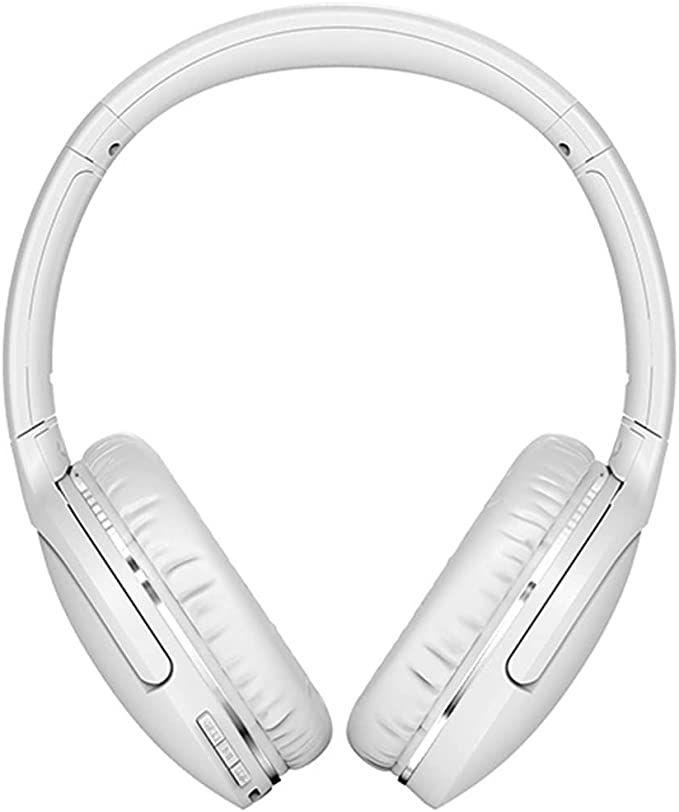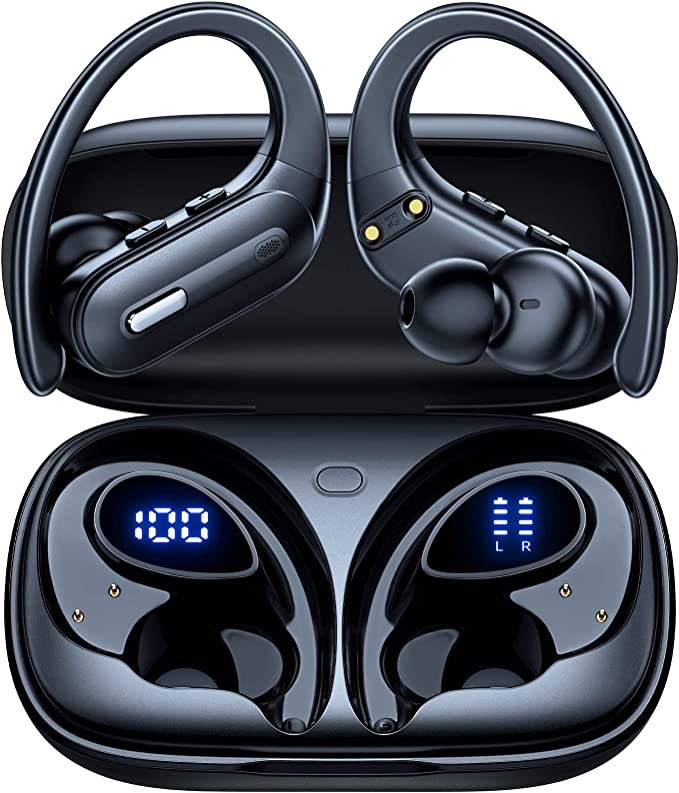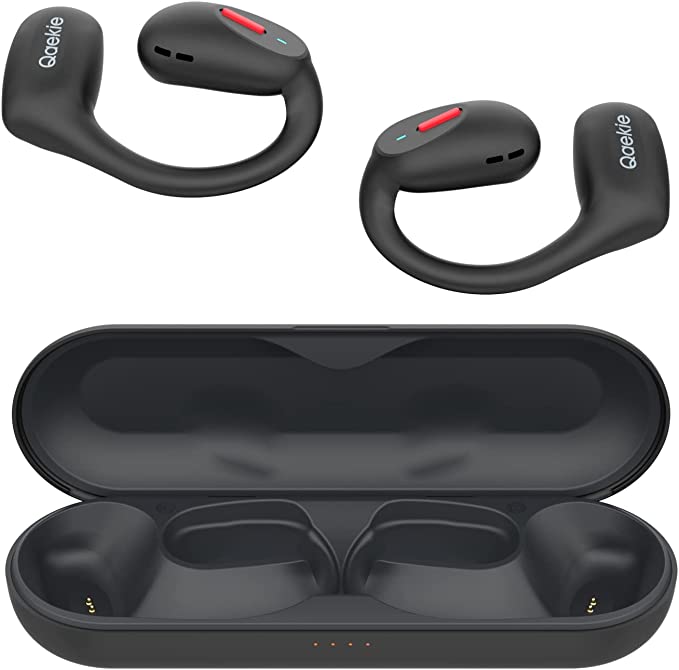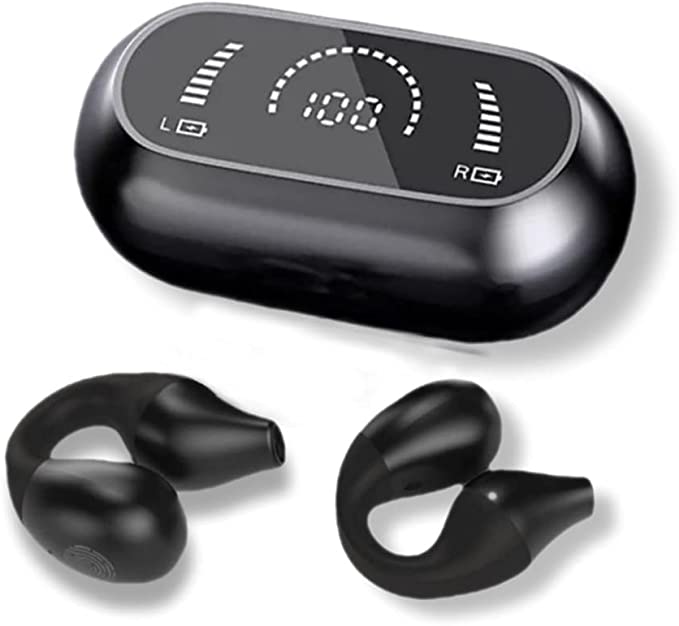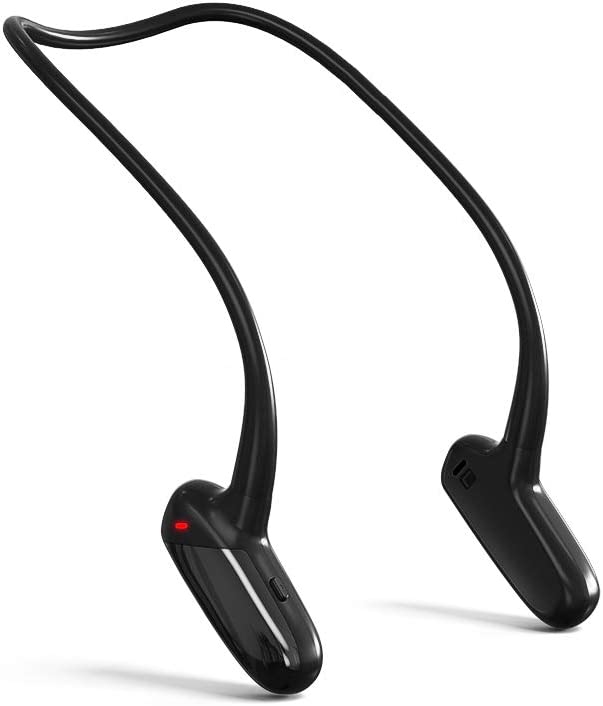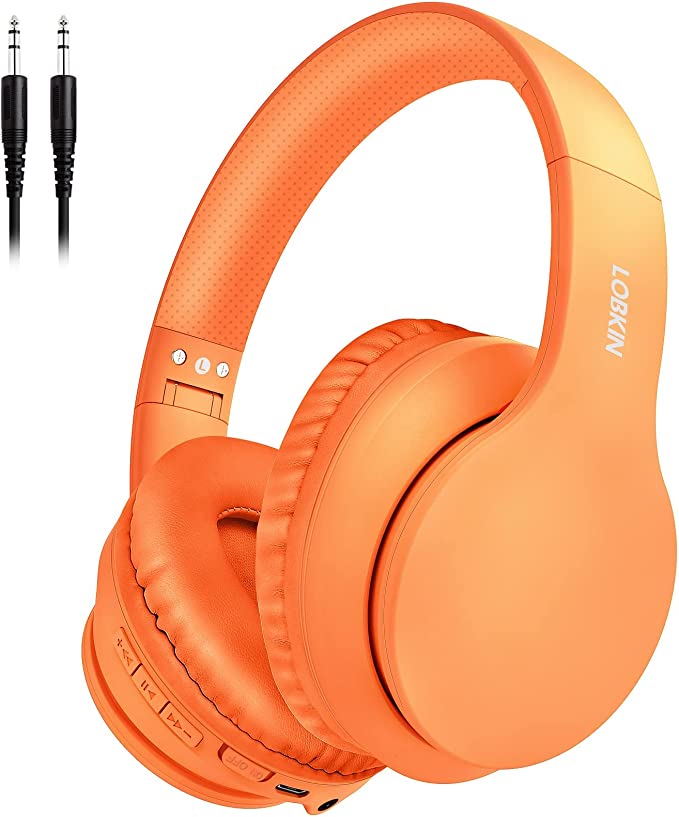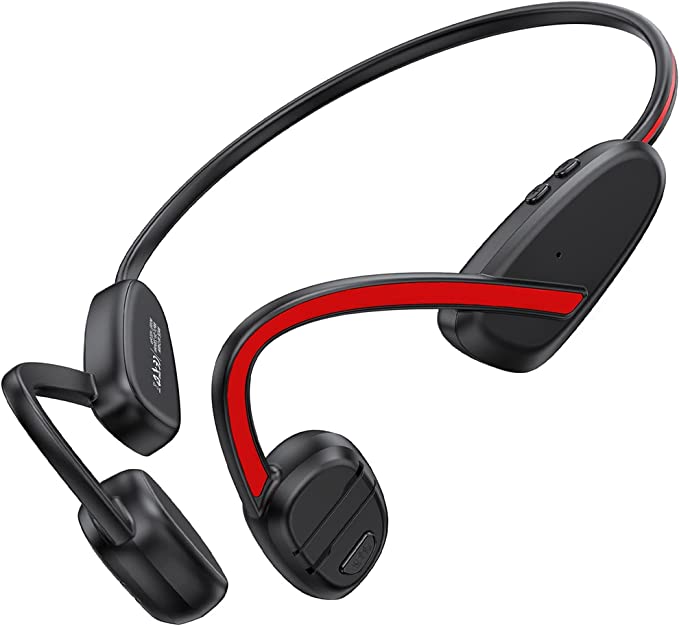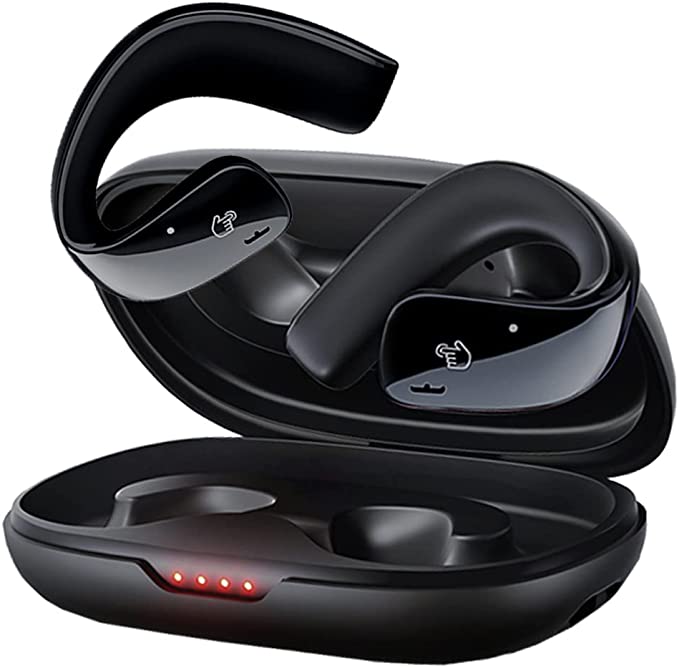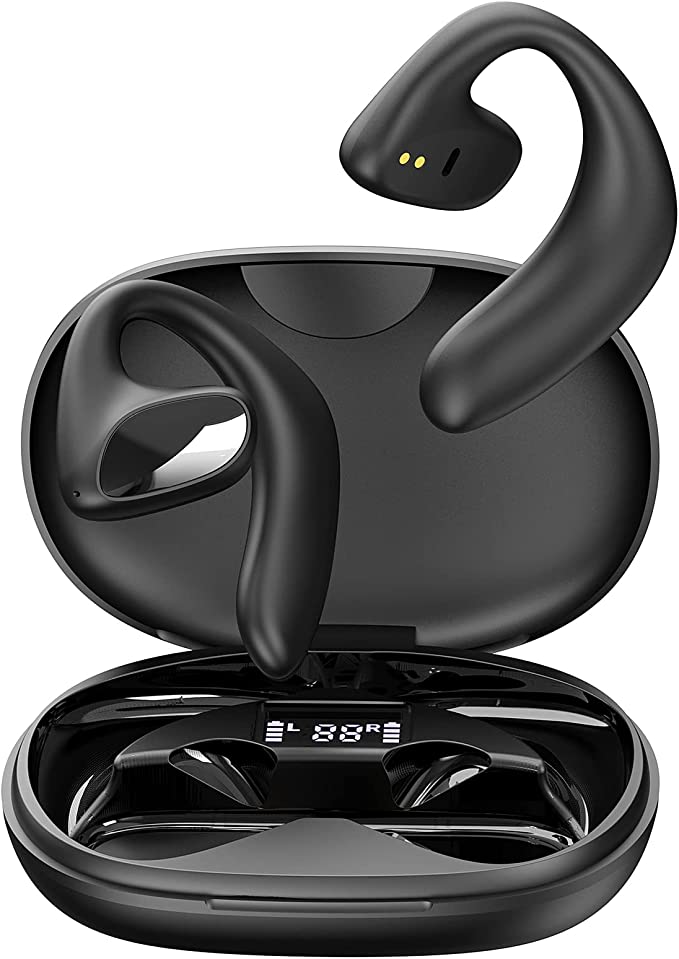BANIGIPA G5 Open Ear Headphones: Enjoy Sound, Stay Aware
Update on Feb. 19, 2025, 10:34 a.m.
The world of personal audio is constantly evolving. For decades, the dominant form factor for headphones has been the in-ear design, prized for its ability to isolate the listener from external noise and deliver immersive sound. However, this very strength has also become a source of growing concern. More and more people are experiencing discomfort, ear fatigue, and even potential hearing damage from prolonged use of in-ear headphones. This has led to the rise of a compelling alternative: open-ear headphones. The BANIGIPA G5 represents one example of this increasingly popular technology. But what exactly is open-ear listening, and how does it work?

The Trouble with Traditional Headphones
Think about your typical experience with earbuds. You insert them snugly into your ear canals, creating a seal that blocks out most external sounds. This is great for focusing on your music or podcast, but it comes with several downsides. First, there’s the physical discomfort. That pressure in your ear canal, especially over long periods, can lead to ear fatigue and even pain. Second, there’s the issue of situational awareness. By blocking out ambient noise, you become less aware of your surroundings. This can be inconvenient when you need to hear announcements or conversations, and downright dangerous when you’re exercising outdoors near traffic or other hazards. Finally, and perhaps most importantly, there’s the risk of hearing damage. When sound is delivered directly into a sealed ear canal, the sound pressure levels can be significantly higher than they would be otherwise, increasing the risk of noise-induced hearing loss over time.

Understanding Open-Ear Technology
Open-ear headphones offer a fundamentally different approach to audio delivery. Instead of blocking your ear canal, they leave it open, allowing you to hear both your audio and the sounds of the world around you. This seemingly simple change has profound implications for both comfort and safety.
- What is Open-Ear Listening?
Open-ear listening, at its core, is about allowing natural sound to reach your eardrums alongside the audio from your headphones. This means you’re not cut off from your environment. You can hear traffic while running, hold a conversation while listening to music, or be aware of important announcements while enjoying a podcast.
- Air Conduction vs. Bone Conduction:
There are two primary technologies used to achieve open-ear listening: air conduction and bone conduction. While the BANIGIPA G5 product listing mentions “air conduction,” it’s important to understand the nuances.
* **Bone Conduction:** This technology bypasses the eardrum entirely. Instead of sending sound waves through the air, bone conduction headphones use transducers to send vibrations through the bones of your skull, directly to your inner ear (the cochlea). This is often perceived as a slightly "different" sound, sometimes described as being "inside your head."
* **Air Conduction (Traditional):** Traditional air conduction works by sending sound waves through the air, just like speakers or regular headphones. *However*, true air conduction headphones that are also "open-ear" are less common.
* **Air Conduction (Modified Open Design):** Most headphones marketed as "air conduction open-ear," including *likely* the BANIGIPA G5, use a modified design. They don't seal the ear canal, but they still use miniature speakers positioned near the ear to direct sound towards it. This provides a more natural sound than bone conduction, but with some potential for sound leakage (others nearby hearing your audio). It's a compromise between fully open (bone conduction) and fully closed (in-ear). *Without more detailed specifications from BANIGIPA, it's difficult to be 100% certain, but this modified open design is the most probable technology.*
- The Physics of Sound (Briefly):
Sound, at its most basic, is vibration. These vibrations travel in waves, characterized by their frequency (which we perceive as pitch) and amplitude (which we perceive as loudness). When these waves reach our ears, they cause our eardrums to vibrate, and these vibrations are then translated into electrical signals that our brains interpret as sound. Open-ear headphones, whether they use air conduction or bone conduction, are simply utilizing different pathways to deliver these vibrations to our inner ear.

Deep Dive into the BANIGIPA G5
Let’s explore the specific features of the BANIGIPA G5 and how they contribute to the open-ear listening experience.
-
Design and Ergonomics: The G5 utilizes an over-ear design. This means that instead of inserting anything into your ear canal, the headphones rest comfortably on the outer ear. This design offers several advantages. First, it’s inherently more comfortable for many people, especially those who find in-ear headphones irritating. Second, it provides a very secure fit. The over-ear hooks ensure that the headphones stay in place, even during vigorous activity like running or cycling. The lightweight materials should add to the long-term comfort. It would be ideal to have the specific weight of the headphones to quantify this.
-
Bluetooth 5.3: A Technological Leap: The BANIGIPA G5 incorporates Bluetooth 5.3, the latest iteration of this ubiquitous wireless technology. This isn’t just a minor upgrade; it represents significant improvements in several key areas:
- Stability: Bluetooth 5.3 offers a more robust and reliable connection than previous versions. This means fewer dropped connections and a more seamless listening experience, especially in environments with a lot of wireless interference.
- Latency: Latency refers to the delay between when an audio signal is sent and when you hear it. Bluetooth 5.3 significantly reduces latency, making it much better for activities like watching videos or playing games, where audio-visual synchronization is crucial.
- Power Efficiency: Bluetooth 5.3 is designed to consume less power. This translates directly to longer battery life for your headphones, allowing you to enjoy your audio for extended periods without needing to recharge.
- Audio Code: While the listing doesn’t specify, Bluetooth 5.3 is typically paired with efficient codecs like SBC or AAC. These codecs compress and decompress the audio signal, balancing sound quality with power consumption.
-
The 10-Hour Battery: Powering Your Day: A 10-hour battery life is a substantial offering, allowing for all-day use for many people. Whether you’re using the headphones for workouts, commutes, or simply relaxing at home, you’re unlikely to run out of power in the middle of your day. The missing piece of information here is the charging time. Knowing how long it takes to fully recharge the headphones is important for users.
-
Addressing Waterproofing (the missing IPX rating): The product listing states that the G5 is “waterproof,” but this term is often used loosely in marketing. What we really need is the IPX rating. IPX (Ingress Protection) ratings provide a standardized way of measuring a device’s resistance to solids (like dust) and liquids (like water). An IPX rating would tell us, for example, whether the headphones are merely splash-proof (IPX4), or if they can withstand being submerged in water (IPX7). This is crucial information for anyone planning to use the headphones during intense workouts or in wet conditions. Without it, it’s impossible to assess the true level of water resistance.
-
Sound Quality in an Open Design: It’s important to have realistic expectations about the sound quality of open-ear headphones. Because they don’t seal the ear canal, there’s inevitably some loss of bass response compared to in-ear headphones. This is simply a consequence of the physics of sound. However, open-ear headphones like the BANIGIPA G5 are designed to compensate for this as much as possible, delivering a clear and balanced sound that’s optimized for the open-ear experience. The emphasis is on clarity and awareness, rather than deep, thumping bass.

Hearing Health and Open-Ear Headphones
One of the most significant advantages of open-ear headphones is their potential to be safer for your hearing. By leaving the ear canal open, they reduce the sound pressure levels reaching the eardrum, lowering the risk of noise-induced hearing loss. However, it’s crucial to understand that this doesn’t mean they’re completely risk-free.
-
How Open-Ear Designs Can Be Safer: The key is the reduced pressure. With in-ear headphones, the sound is trapped in a small, enclosed space, leading to higher sound pressure levels. With open-ear headphones, the sound can dissipate more naturally, reducing the intensity.
-
Tips for Safe Listening Practices: Regardless of what type of headphones you use, it’s essential to follow these guidelines to protect your hearing:
- Keep the Volume Down: The most important factor is volume. Avoid listening at excessively loud levels, especially for extended periods. A good rule of thumb is the 60/60 rule: listen at no more than 60% of the maximum volume for no more than 60 minutes at a time.
- Take Breaks: Give your ears regular breaks from listening to audio.
- Be Aware of Your Environment: If you’re in a noisy environment, you might be tempted to turn up the volume to compensate. Try to avoid this, as it can expose you to even higher sound levels.
- Consider Noise-Canceling Headphones (in specific situations): While open-ear headphones are great for situational awareness, if you’re in a consistently loud environment (like on a plane), noise-canceling headphones might actually be a better choice for protecting your hearing, as they allow you to listen at lower volumes.

The Future of Open-Ear Audio
Open-ear headphone technology is still relatively young, and we can expect to see significant advancements in the coming years.
- Improved Sound Quality: Researchers are constantly working on ways to improve the sound quality of open-ear headphones, particularly in the bass frequencies. New materials and acoustic designs are being developed to deliver a richer, more immersive listening experience.
- Enhanced Noise Cancellation (in a different sense): While open-ear headphones are designed to let ambient sound in, there’s also a need to minimize sound leakage (the sound that escapes from the headphones and can be heard by others). Future open-ear headphones may incorporate technologies to better direct the sound to the user’s ears and reduce leakage.
- Smart Features: We can expect to see more open-ear headphones with integrated smart features, such as voice assistants, fitness tracking, and even real-time language translation.
- Miniaturization Smaller and more descrete designs

Conclusion
Open-ear headphones represent a significant step forward in personal audio technology. They offer a compelling alternative to traditional in-ear headphones, prioritizing comfort, safety, and situational awareness. The BANIGIPA G5, with its over-ear design, Bluetooth 5.3 connectivity, and long battery life, embodies many of the benefits of this technology. While it’s crucial to have realistic expectations about sound quality and to obtain the missing IPX rating for a complete understanding of its water resistance, the G5 offers a promising glimpse into the future of listening. By understanding the science behind open-ear headphones and practicing safe listening habits, we can enjoy our audio while protecting our precious sense of hearing.


